Publications
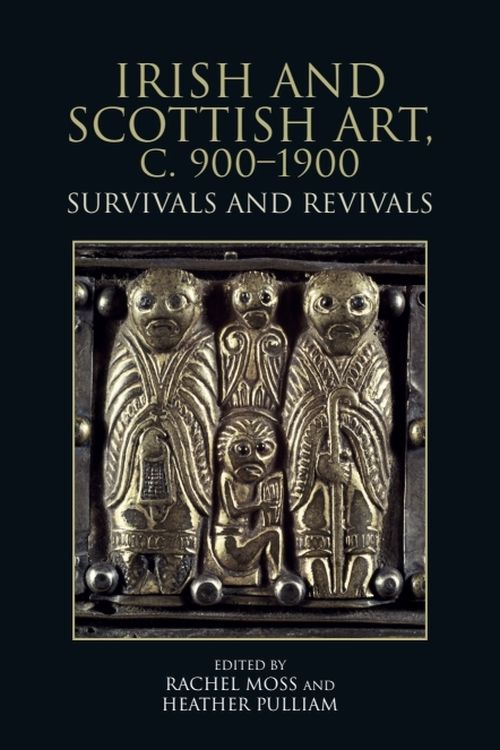
Irish and Scottish Art c. 900-1900: Survivals and revivals
Edited by Rachel Moss (TCD)and Heather Pulliam (Univ. Edinburgh)
As evidenced by the famed Book of Kells and monumental high crosses, Scotland and Ireland have long shared a distinctive artistic tradition. The story of how this tradition developed and flourished for another millennium through survival, adaptation and revival is less well known. Some works were preserved and repaired as relics, objects of devotion believed to hold magical powers.
Respect for the past saw the creation of new artefacts through the assemblage of older parts, or the creation of fakes and facsimiles. Meanings and values attached to these objects, and to places with strong early Christian associations, changed over time but their 'Celtic' and/or 'Gaelic' character has remained to the forefront of Scottish and Irish national expression.
Exploring themes of authenticity, imitation, heritage, conservation and nationalism, these interdisciplinary essays draw attention to a variety of understudied artworks and illustrate the enduring link that exists between Scottish and Irish cultures.
More information: https://edinburghuniversitypress.com/book-irish-and-scottish-art-c-900-1900.html
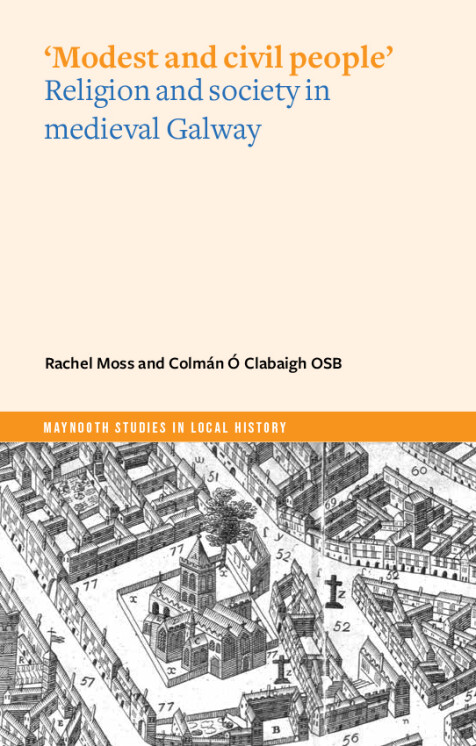
'Modest and civil people': Religion and society in medieval Galway
Rachel Moss and Cólman Ó Clabaigh OSB
The town of Galway occupied a unique situation in medieval Ireland. Conspicuously English in its religious and political allegiances, it existed in an overwhelmingly Gaelic hinterland, far from the institutions of the colonial administration. Having cast off the overlordship of the de Burgh family by the fifteenth century, it functioned as a quasi-oligarchy dominated by a mercantile elite until well into the seventeenth century. Its position as a prosperous port town exposed it to influences from England and the Continent. This study examines how all these elements found expression in the town's civic and religious institutions as well as in its remarkable medieval art and architecture. It argues that the revival of the town in the late fifteenth century sprang from a programme of economic, political and religious renewal that transformed it into a self-confident, self-regulating urban community, a veritable City of God.

The Life and Work of Richard King: Religion, Nationalism and Modernism, Ruth Sheehy (Peter Lang, 2020)
This book on the Irish liturgical artist Richard King (1907-74), examines his career in the context of religion, nationalism and modernism. The book focuses on the interdisciplinary relationship between religion and art during pre- and post-Vatican II Ireland. The importance of Irishness and nationalism is shown by the artist's early secular work of the 1930s and 1940s. His apprenticeship under Harry Clarke (1889-1931) was pivotal for his principal career as a stained glass artist. However, his departure from the Harry Clarke Stained Glass Studios in 1940 allowed him to gradually move away from Clarke's influence and to develop his own artistic identity. King was also a talented illustrator for The Capuchin Annual and The Father Mathew Record. From the late 1940s to the early 1970s, his awareness of the work of other artists in Ireland, England and Europe led him to engage with modernism. The Documents of Vatican II and his interest in the Scriptures and theology enabled King to grow at the spiritual level which was reflected in his religious art of the mid to late 1960s and early 1970s. His study of the theological writings of French palaeontologist, philosopher and theologian Pierre Teilhard de Chardin (1881-1955) was crucial for King's more intellectual approach to matters of Christian faith.

Harry Clarke and Artistic Visions of the New Irish State, eds Angela Griffith, Marguerite Helmers and Roisin Kennedy (Irish Academic Press, 2018)
This book is a collection of essays that examines the complex relationship between visual art and literature that lies at the heart of Clarke’s contribution to Irish post-independence culture, and highlights themes such as patronage, public reception, advertising, propaganda, war and memory. Contributions from department graduates and current postgraduate students include Paul Donnelly, Kathryn Milligan and Éimear O’Connor.

The Book of Durrow. Official Guide, Rachel Moss (Thames and Hudson, 2018)
The book explores the disputed background of this ancient gospel book, the sources of its intricate designs and the clues that later additions to its pages yield about its 1,300 year old life.

Illuminated History Books in the Anglo-Norman World, 1066-1272, Laura Cleaver (Oxford University Press).
This book explores the twelfth- and thirteenth-century manuscripts that have been a major source for our understanding of medieval history. It examines how and why imagery was used by the makers of these books to communicate ideas about the past. In doing so, it draws attention to the intertwined roles of authors, scribes, patrons and artists in creating, copying, and disseminating history in the Middle Ages.

Writing History in the Anglo-Norman World, eds Laura Cleaver and Andrea Worm (Boydell & Brewer, 2018)
Writing History in the Anglo-Norman World is a collection of essays exploring the processes involved in producing history books in the Middle Ages. The manuscripts studied include some of the highlights of Trinity College’s collection, such as Matthew Paris’ Life of St Alban, which is discussed by Laura Slater (who held a fellowship at Trinity in 2012), and John of Worcester’s Chronicula.

An Insular Odyssey: Manuscript Culture in Early Christian Ireland and Beyond, eds Rachel Moss, Felicity O'Mahony and Jane Maxwell (Four Courts Press, 2017))
This book brings together eighteen essays about early Irish manuscripts. The main focus is on manuscripts in the Trinity College Library Collections, from the famous Book of Kells, to the more obscure Garland of Howth, and showcases the recent research of scholars for a number of disciplines, that serve to highlight the international importance of these precious books.

Making Magnificence, architects, stuccatori and the 18th century interior, Christine Casey (Yale University Press, 2017)
This book combines a narrative study of migrant European craftsmen with a thematic exploration of the interface between architecture and craftsmanship. It examines the role of decoration in early modern European architecture and demonstrates the role of Italian speaking craftsmen in the design and making of sumptuous interiors in Europe, Britain and Ireland.
Making magnificence, architects, stuccatori and the 18th century interior was awarded the 2018 Alice Davis Hitchcock medallion for ‘outstanding contribution’ to architectural history
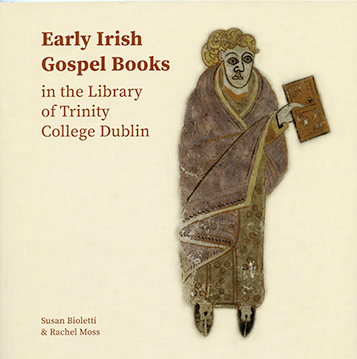
Early Irish Gospel Books in the Library of Trinity College Dublin, Susie Bioletti and Rachel Moss (Trinity College Dublin, 2016)
The Library of Trinity College Dublin possesses seven early Irish Gospel books, of which the Book of Kells is the most famous. This book outlines what is known about how these manuscripts were made, including recent scientific research on the pigments used by their makers. It explores who might have been responsible for their creation, and the type of environment in which they worked. The different formats of the books, and the nature of their ornament yield some clues as to how they were originally intended to be used, while various interventions – from added lines of text, to forged signatures, to particular patterns of damage – provide disjointed glimpses into the stories of their survival. The book is lavishly illustrated with many photographs published here for the first time. Available to purchase online from https://gifts.tcd.ie/books/. All proceeds towards preservation of and research into the Library collections.
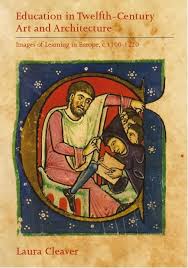
Education in Twelfth-Century Art and Architecture Images of Learning in Europe, c.1100-1220
Laura Cleaver (Boydell and Brewer, 2016)
On the facade of Chartres cathedral serene personifications of the arts of grammar, rhetoric, dialectic, music, arithmetic, geometry and astronomy present passers-by with a vision of education as an improving process leading to greater knowledge of God. The arts proved a popular subject in medieval imagery, and were included in manuscripts, stained-glass and luxury metalwork objects as well as on the facades of churches. These idealized figures contrast with many textual accounts of education, in which authors recorded the hardships of student poverty and the temptations of drink and women to be found in the cities where teachers were increasingly establishing themselves. This book considers how and why education was explored in the art and architecture of the twelfth century. Through analysis of imagery in a wide range of media, it examines how teachers and students sought to use images to enhance their reputations and the status of their studies. It also investigates how the ideal models often set out in imagery compared with contemporary practice in an era that saw significant changes, beginning with a shift away from monastic education and culminating in the appearance of the first universities.
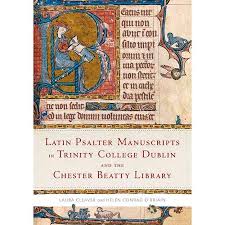
Latin Psalter manuscripts in Trinity College Dublin and the Chester Beatty Library
Laura Cleaver & Helen Conrad O'Briain (Four Courts Press, 2015)
The book of Psalms was at the core of devotional practice in western Christianity throughout the Middle Ages. The study of medieval Latin Psalters provides evidence for the owners, users and makers of each of these unique books.
This volume examines Psalter manuscripts as objects, exploring how they were designed and the changes that have been made to them over time. The choices made about text, decoration, size and layout in these manuscripts reveal a diverse range of engagements with the Psalms, as they were sung, read and scrutinized. The book thus sheds new light on some of the treasures of Trinity College Dublin and the Chester Beatty Library.
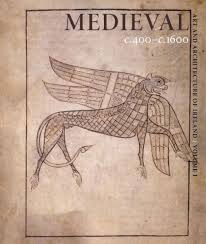
Art and Architecture of Ireland Volume I: Medieval c. 400-c. 1600
Rachel Moss (Yale University Press, 2014)
An unrivalled survey of all aspects of the rich and varied visual culture of Ireland c.400-1600. Based on many years of original scholarly research, the book contains over 300 lively and informative essays and is magnificently illustrated. Readers will enjoy expanding their knowledge of medieval Ireland through explorations of the objects and buildings produced there and the people who created them.
The Art and Architecture of Ireland volumes, published for the Royal Irish Academy and the Paul Mellon Centre, are an authoritative and fully illustrated account of the art and architecture of Ireland from the early Middle Ages to the end of the twentieth-century.
2014, Yale University Press, 592 pages
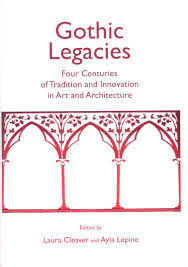
Gothic Legacies: Four Centuries of Tradition and Innovation in Art and Architecture
(eds.) L. Cleaver & A. Lepine (Newcastle, 2012).
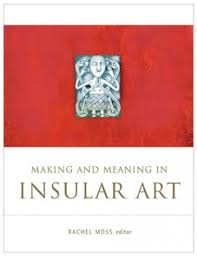
Making and Meaning in Insular Art: Proceedings of the Fifth International Conference on Insular Art Held at Trinity College Dublin, 25-28 August 2005
Rachel Moss (Four Courts Press, 2006) ).
Four Courts Press, 2007 Comprising papers from the 5th international conference on insular art held at Trinity College in August 2005, this volume deals with the technological and intellectual contexts of insular sculpture, metalwork, manuscript illumination and architecture, and the use of new methodologies in the scholarship of early medieval art. Contributors include: Martin Carver (U. York), Gifford Charles-Edwards (U. Wales, Bangor), Anna Gannon (U. Cambridge & British Museum), Mark Hall (Perth Museum & Art Gallery), Peter Harbison (RIA), Jane Hawkes (U. York), Colum Hourihane (Princeton), Catherine E. Karkov (Miami U.), Bernard Meehan (TCD), Tessa Morrison (U. Newcastle, Australia), Paul Mullarkey (NMI), Griffin Murray (UCC), Lawrence Nees (U. Delaware), Carol Neuman de Vegvar (Ohio Wesleyan U.), Daibhi O Croinin (NUIG), Jenifer Ni Ghradaigh (DIAS), Tomás Ó Carragáin (UCC), Jennifer O’ Reilly (UCC), Heather Pulliam (Western Kentucky U.), Michael Ryan (CBL), Roger Stalley (TCD), Catherine Swift (NUIM), and Niamh Whitfield (Morley College, London).
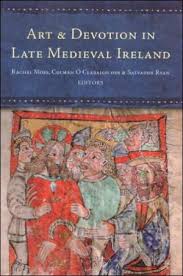
Art and Devotion in Late Medieval Ireland.
Rachel Moss, Colman O Clabaigh and Salvador Ryan (eds) (Four Courts Press, 2006)
The religious art of early Christian Ireland has attracted much scholarly and popular attention. In contrast the devotional world of later medieval Ireland has, until recently, been relatively neglected. This multi-disciplinary volume redresses this by examining the material culture of late medieval Irish devotion against its artistic, historical, theological and liturgical background. The contributors draw on recent advances in international scholarship to provide a broader context for the Irish material. Subjects examined include: wall paintings, metalwork, shrines and reliquaries, manuscripts and books of hours, stained glass and vestments. Other contributions deal with the religious imagery of Irish bardic poetry and the cults of the Virgin Mary and St. Francis of Assisi.
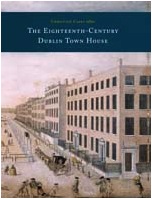
The Eighteenth-Century Dublin town house
Form, function and finance
Christine Casey, editor
In the 18th century Dublin grew spectacularly; in the last quarter of a century, understanding of that growth has increased enormously. This book brings together a range of perspectives on the subject of the 18th-century Dublin town house, illuminating the political, economic and cultural activities of Dubliners, the resulting physical growth of the city and changing architectural manifestations. Some of the studies focus on questions of style and technique; others seek to relate the places in which people lodge to the lives they passed in them. The essays draw on an impressive variety of sources including archaeological investigations of sites and documentary evidence such as maps, leases, and family correspondence.
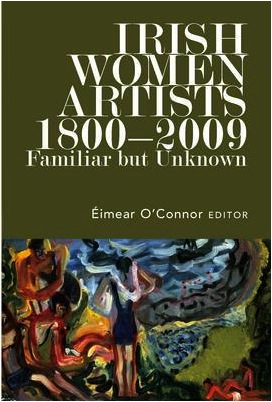
Irish women artists, 1800-2009
familiar but unknown
Éimear O'Connor, editor
This collection of essays examines the life, career, work and context of familiar but previously little-known Irish women artists. It focuses on the work of women artists living in Ireland. The authors have produced essays that are hugely diverse in terms of content, method and theoretical issues. Some take a gendered point of view; others adopt a biographical and documentary, albeit interrogative, approach, while some question the construction and constriction of the canon of art, arguing that it is a patriarchal structure that has disallowed the inclusion of the work of women.
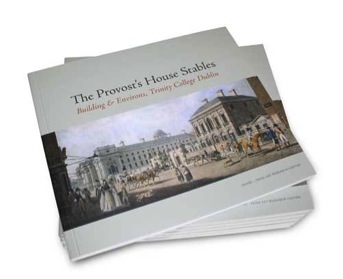
The Provost's House Stables
Y. Scott and R. Moss (eds)
(Dublin, 2008)
This collection of essays, drawings and photographs was published to commemorate the official opening of TRIARC (Trinity Irish Art Research Centre) in Trinity College, Dublin. The book features a preface by Desmond Fitzgerald, Knight of Glin and essays by Edward McParland, John Tuomey, Patricia McCarthy, Rachel Moss and Yvonne Scott. The essays represent various periods in the building's history as well as associated artworks.

